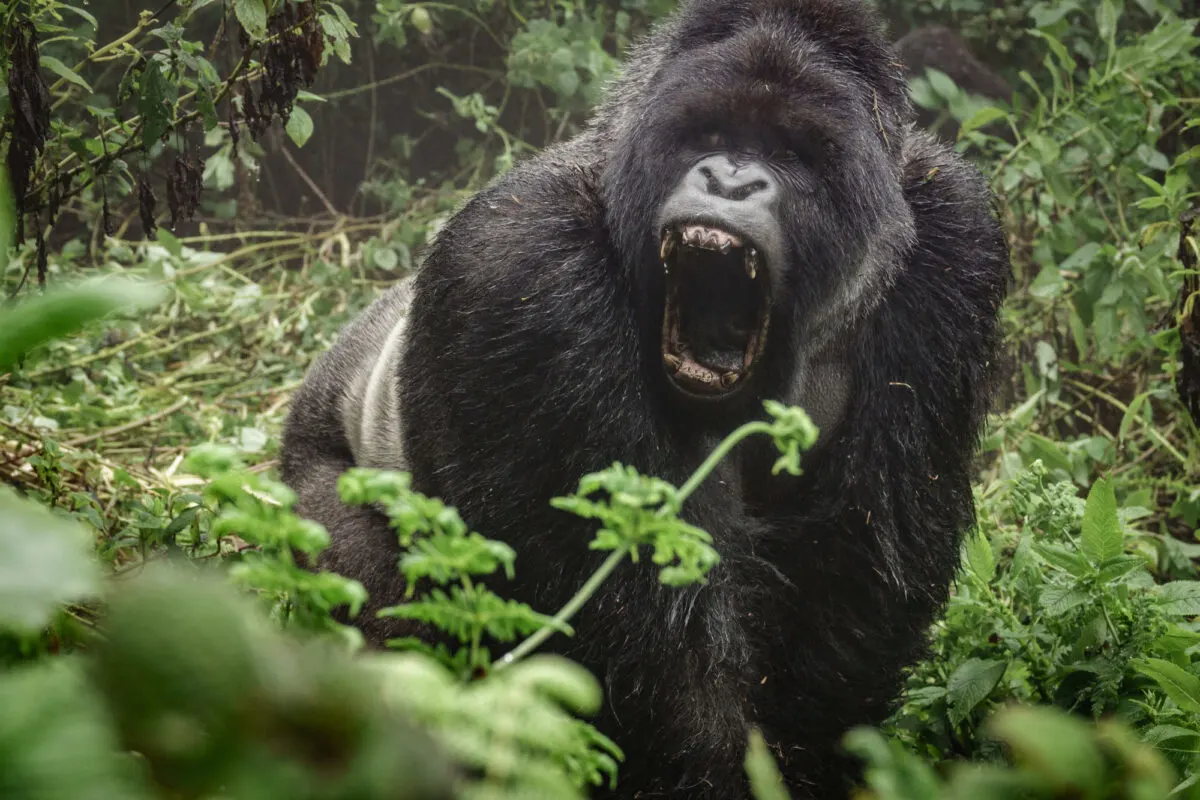While each species is unique, they share many similarities in anatomy, behavior, and cognitive abilities. Studying these apes provides a valuable window into our evolutionary history and our understanding of primate biology and behavior. This one weighted almost 600 pounds!
Key Points
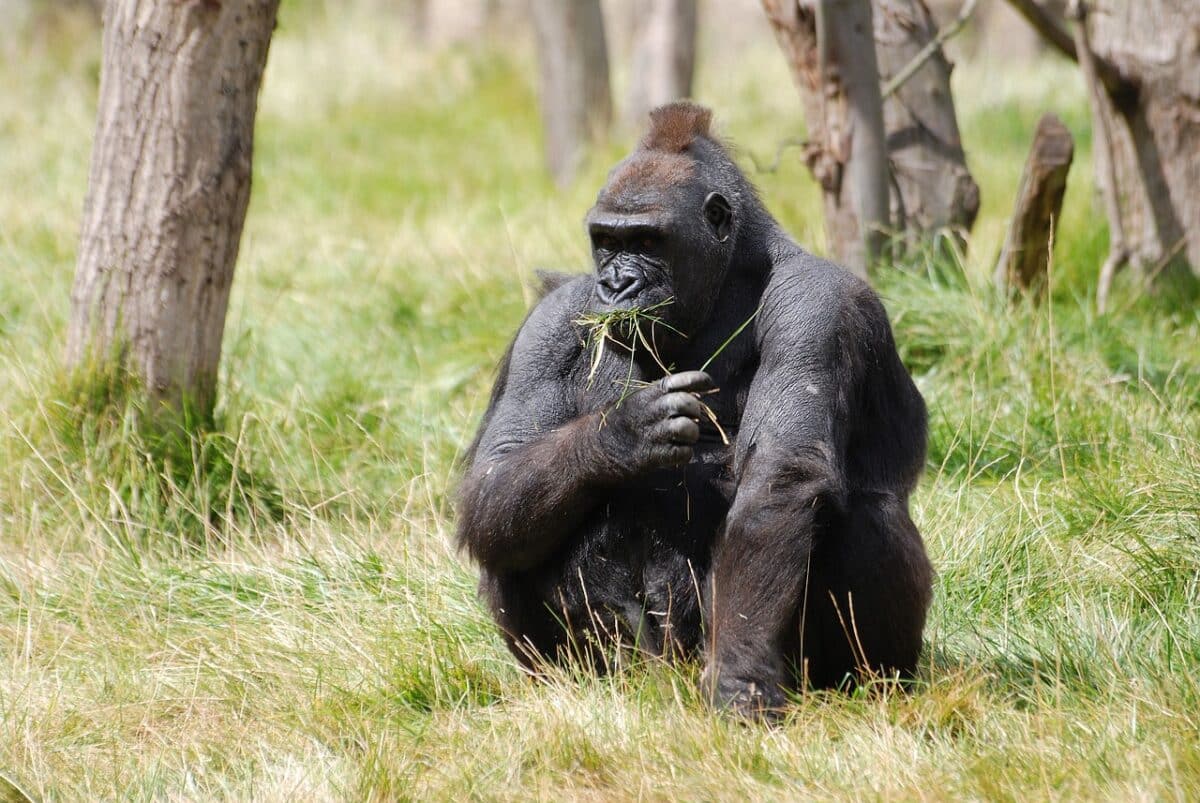
| Studying apes provides a valuable window into our evolutionary history and our understanding of primate biology and behavior. |
| The largest ape in the world is the eastern Gorilla, which belongs to the Gorilla genus. |
| There are four main ape species – orangutans, gorillas, chimpanzees, and bonobos. |
| The Gorilla is the most giant ape with an average weight range of 140-250 kg and can grow over 1.8 meters tall. |
| Human activities, such as habitat destruction and hunting, have significantly declined their population numbers, putting them on the brink of extinction. |
Jump ahead to any section below!
The Largest Ape
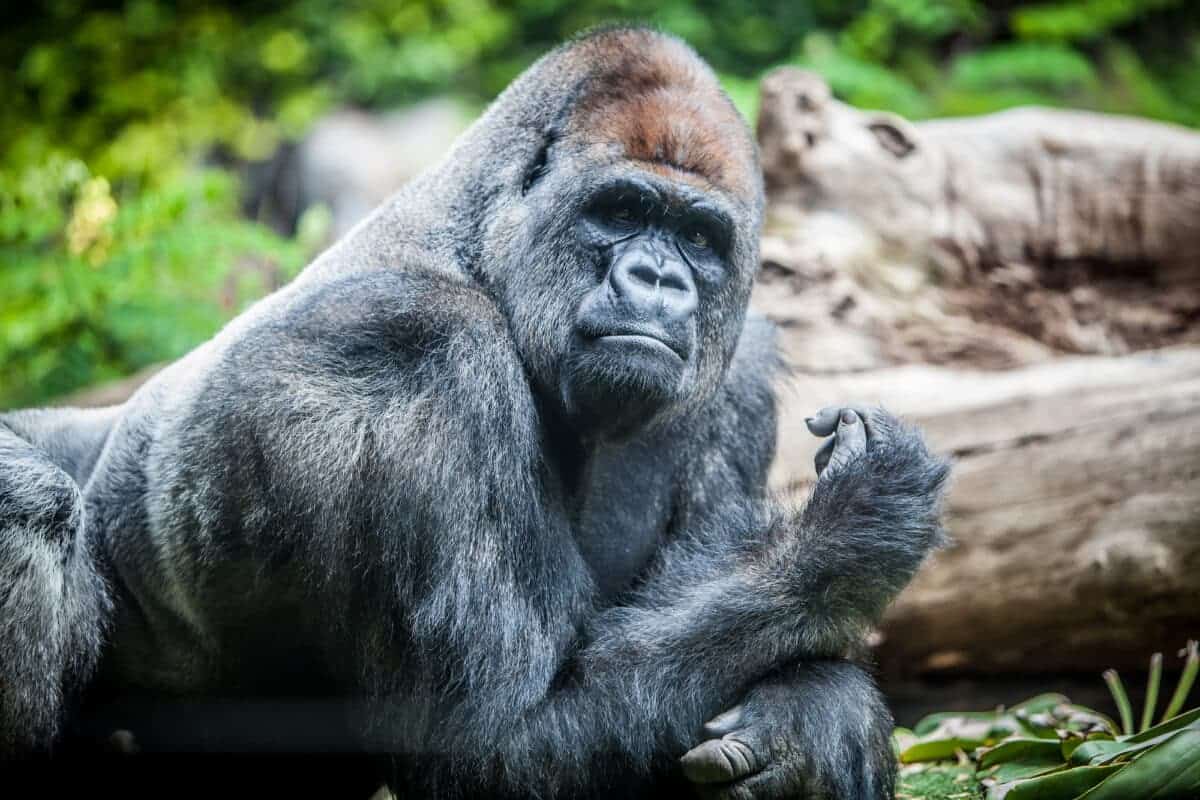
Gorilla via Pexels.
When discussing the enormous ape, we refer to the primate species that weighs the most and measures the longest. Primates are a diverse animal group that includes apes, monkeys, lemurs, and tarsiers. While some apes can be small, like the Hoolock tarsier weighing only 2kg, others can grow to be massive, like the Gorilla weighing up to 250kg. Therefore, “largest ape” refers explicitly to the heaviest and longest primate species on Earth.
Hence, as mentioned earlier, the Gorilla is the largest ape with an average weight range of 140-250 kg and can grow over 1.8 meters tall. Gorillas possess massive physical strength, with the males being much larger than the females.
For gorillas, an average lifespan is around 35 years in the wild and up to 50 years in captivity. One of the fascinating traits of gorillas is that they have remarkable intelligence and can communicate with other gorillas using a range of complex sounds and gestures.
Check out: Largest Asian Elephant.
Comparison Of Different Species Of Apes Based On Size And Weight

Regarding apes, there are four main species – orangutans, gorillas, chimpanzees, and bonobos. Each species possesses unique physical characteristics and can be distinguished based on size and weight.
For instance, the smallest of the apes is the bonobo, weighing around 40-50 kg. In contrast, the largest of the apes is the Gorilla, whose weight can exceed 250kg. Chimpanzees weigh approximately 40-60 kg, while orangutans have an average weight range of 30-90 kg.
Learn more about the different kinds of primate species here!
Physical Characteristics
The largest ape in the world is the eastern Gorilla, which belongs to the Gorilla genus. These magnificent creatures have been the subject of fascination by both wildlife enthusiasts and researchers due to their unique physical and behavioral characteristics.
This article will catalog the most remarkable features that make the eastern Gorilla stand out.
Check out: Eyelash Viper bite.
Size And Weight
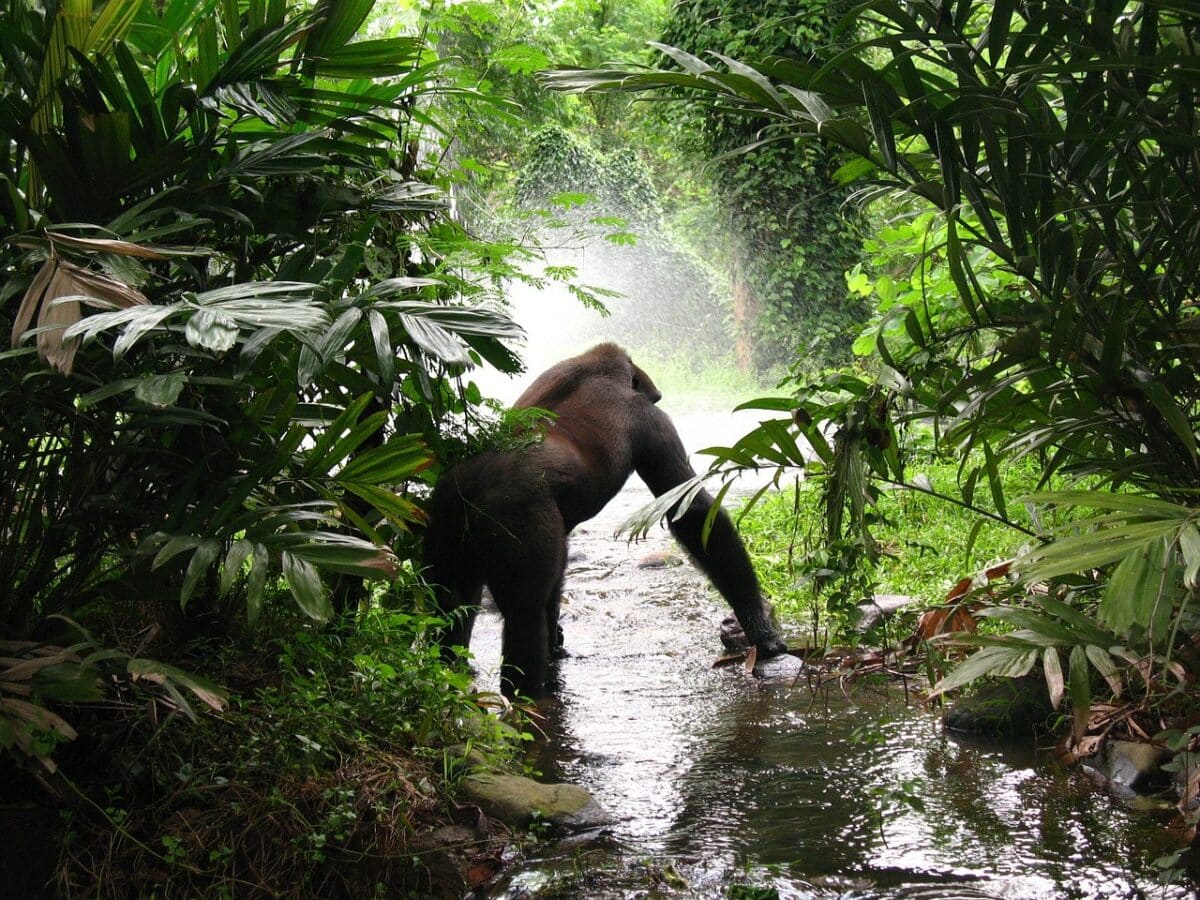
Gorilla via Pixabay.
The Eastern Gorilla is the largest living primate on Earth. Males can weigh up to 440 pounds and are about 5.5 feet tall when standing erect. Females are significantly smaller, weighing around 220 pounds and standing 4.5 feet tall. Eastern gorillas have bulky and muscular bodies covered by dense, blackish-brown fur. They have long arms ideal for climbing trees and knuckle-walking on the ground.
Skull And Face
The skull is another distinctive characteristic of the eastern Gorilla. Their heads have a prominent brow ridge and sagittal crest to anchor the large jaw muscles. Their face is also relatively flat, with small nostrils, broad cheeks, and round eyes.
Diet
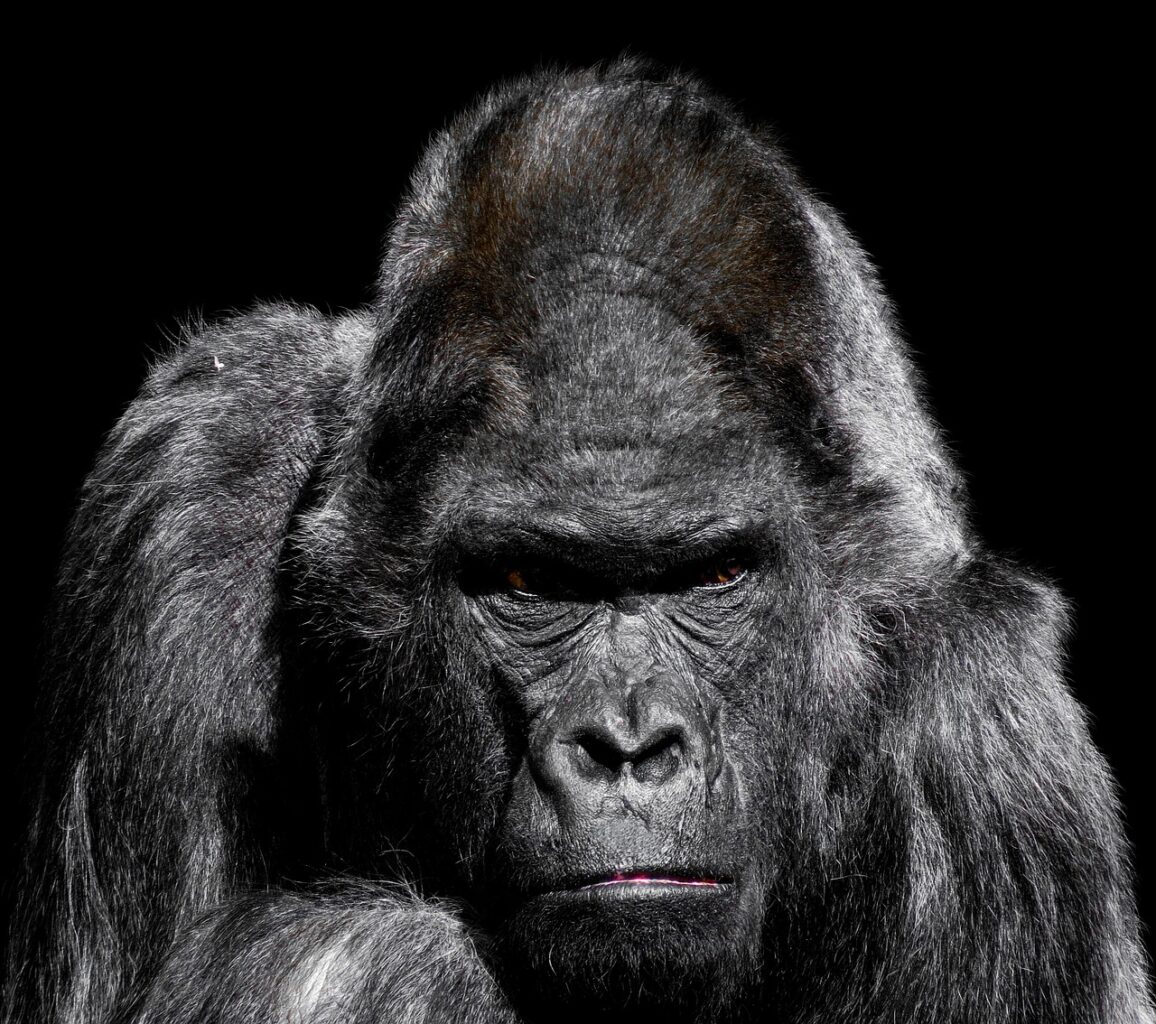
Gorilla Male via Pixabay.
Eastern gorillas are herbivores and primarily eat leaves, stems, and bark from over a hundred species of plants. They also consume fruits and flowers in small quantities. Their digestive system is designed to effectively break down tough fibers from plant material.
Check out: What You Need to Know About Mangrove Snake Bites.
Behavioral Traits
Eastern gorillas live in social groups known as troops, comprising one dominant silverback male, several females, and their offspring. Silverbacks are responsible for protecting their territory, females, and the young.
In addition, they communicate through body language, vocalizations, and scent marking. They also have a remarkable sense of smell that helps them locate food and detect the presence of predators.
Habitat And Distribution
Eastern gorillas are native to the rainforests of Central and East Africa and are found in two subspecies: the eastern lowland gorilla and the mountain gorilla. Their preferred habitat is threatened by deforestation, poaching, illegal mining, and war conflicts.
Besides, the eastern lowland gorilla inhabits the lowland forests of the Democratic Republic of Congo. In contrast, the mountain gorilla is restricted to the high-altitude rainforests of the Virunga Massif, which covers parts of Uganda, Rwanda, and Congo.
The exact population of eastern gorillas is unknown, but both subspecies are classified as critically endangered by the International Union for Conservation of Nature.
The largest gorilla ever recorded
The largest gorilla recorded was a 1.83 m (6 ft 0 in) silverback in Ambam, Cameroon, which weighed 267 kg (589 lb)! So, the largest gorilla in Cameroon could be around 100 to 150 pounds heavier and a few inches taller than a normal-sized male Eastern Gorilla
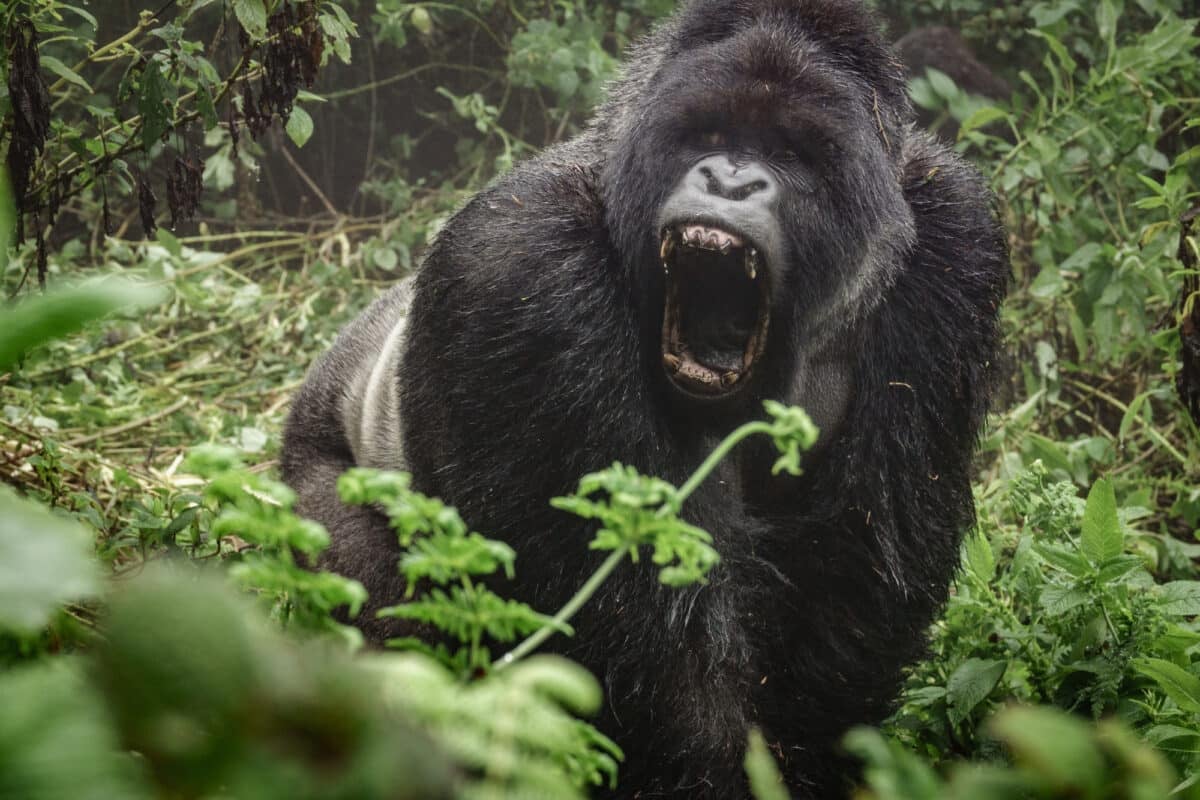
Evolution And Ancestry
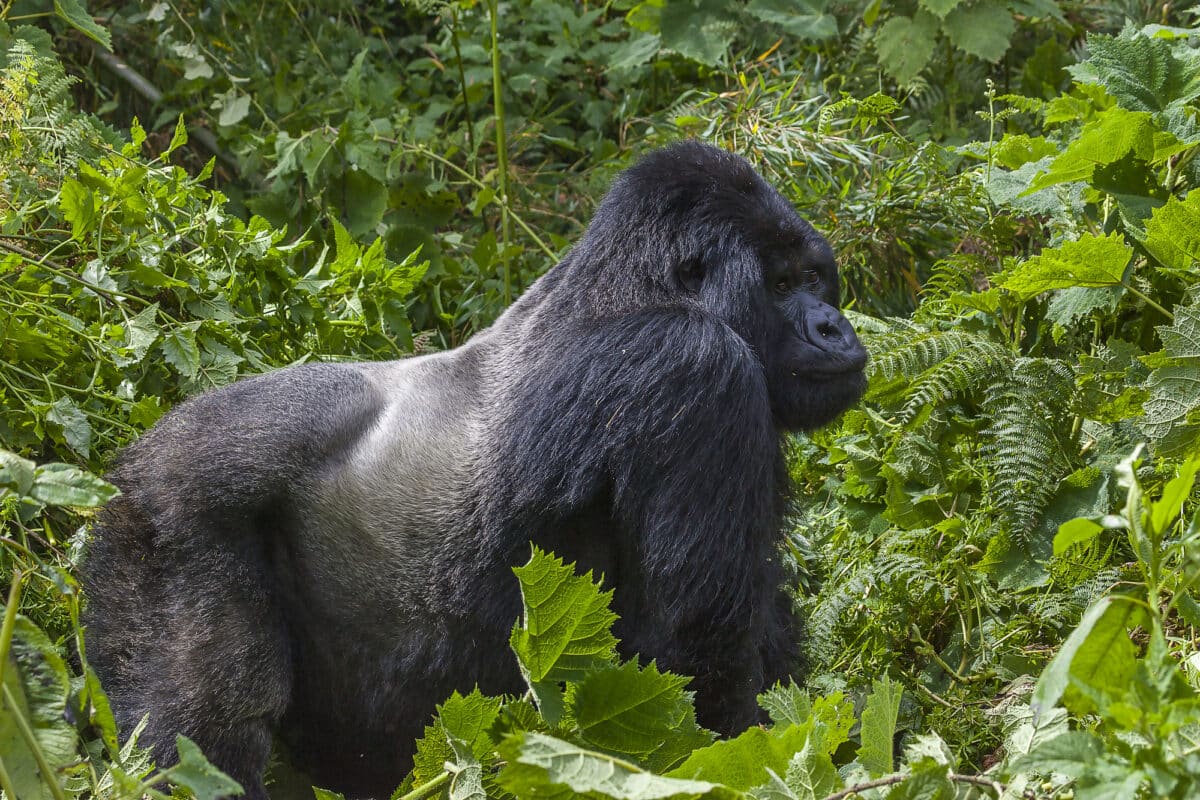
Gorilla via Shutterstock.
The largest ape, commonly known as the Gorilla, belongs to the family Hominidae, which includes all great apes and humans. The oldest known fossil of a gorilla dates back to around 10 million years ago, when these apes lived in environments quite different from their current habitats. Over time, the Gorilla has evolved to adapt to its changing environment and has become a formidable primate in its own right.
Analysis of the Ape Family Tree
To better understand the evolution of the largest ape, examining the ape family tree is a good option. This tree comprises several branches, each representing a different species of evolved ape. At the base of the tree lies the common ancestor of all modern apes, believed to have lived around 25 million years ago.
As we move up the tree, we see the emergence of the first great apes, which include gibbons, orangutans, gorillas, chimpanzees, and humans. Each of these branches represents a different stage of evolution, with each species adapting to its environment uniquely.
The Evolutionary Processes That Led To The Development Of The Largest Ape
The development of the largest ape results from several critical evolutionary processes. Natural selection is one of the most important of these processes, which allows certain traits to become more prevalent over time.
Over millions of years, the Gorilla evolved to become an expert climber, using its mighty arms and legs to navigate the dense forests of Africa. Genetic drift was another critical process that contributed to the evolution of the largest ape, which occurs when certain genetic traits become more common in a population over time.
This process helps to explain the diversity we see in the ape family tree, as each species is uniquely adapted to its environment.
FAQS
The largest ape is the Gorilla, specifically the Eastern Gorilla, which can weigh up to 440 pounds and reach a height of about 5.5 feet for males. Females are smaller, weighing around 220 pounds and standing 4.5 feet tall.
Gorillas communicate through various means, including body language, vocalizations, and scent marking. They also have a remarkable sense of smell that helps them locate food and detect the presence of predators.
Gorillas face numerous threats, including habitat destruction due to deforestation, mining, and urbanization. They are also vulnerable to poaching and the impacts of war conflicts.
The Bottom Line
Human activities, such as habitat destruction and hunting, have significantly declined their population numbers, putting them on the brink of extinction. The destruction of their natural habitats has been primarily caused by deforestation, mining, and urbanization, making it harder for these gentle giants to find food and shelter.
It is crucial to take action to protect these apes and their habitat to ensure their Survival and prevent their extinction. As individuals, we can contribute to conservation efforts by reducing our carbon footprint, supporting sustainable products, and donating to organizations that aim to protect these magnificent creatures. We must act fast to prevent the extinction of these giant species and ensure that future generations can appreciate and admire their beauty and importance.
If you enjoyed this article as much as me, check out our related article links below!
Next up:
- Green Iguana Bites: 10 Essential Tips for Safe Pet Ownership
- How To Deal With A Bearded Dragon Bite
- The Northern Pacific Rattlesnake Bite
- Mighty Komodo Dragon Bite
- What To Do After A Red-Bellied Black Snake Bite
- How Can You Avoid Getting Bitten By A Yellow Sac Spider
- The Northern Copperhead Bite
- Washington’s Western Rattlesnake
- Watch Starfish Walking on the Beach - April 24, 2024
- Watch Bison Stampede Around Bus in Yellowstone - April 24, 2024
- How to Survive a Tiger Attack - April 23, 2024

